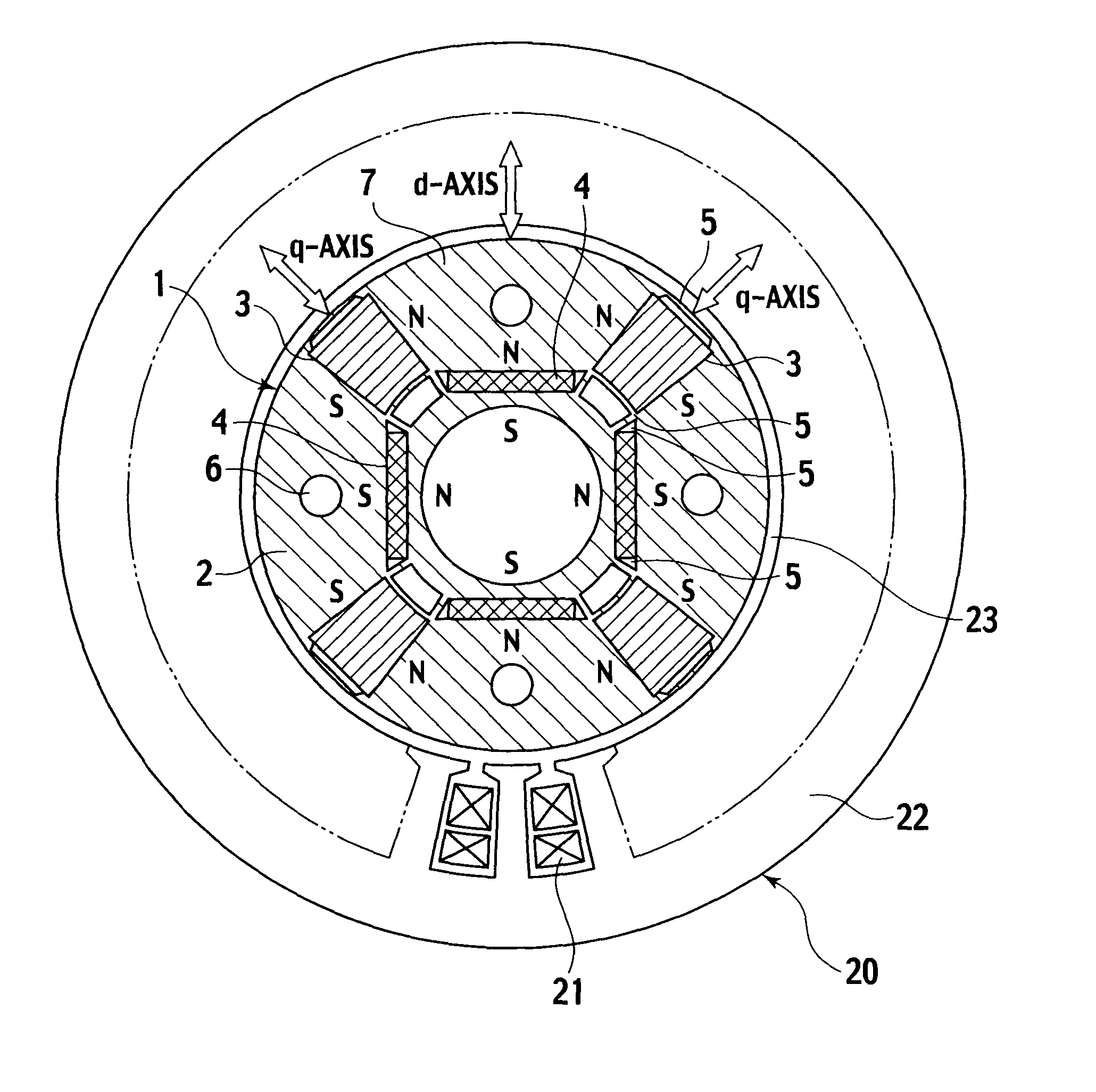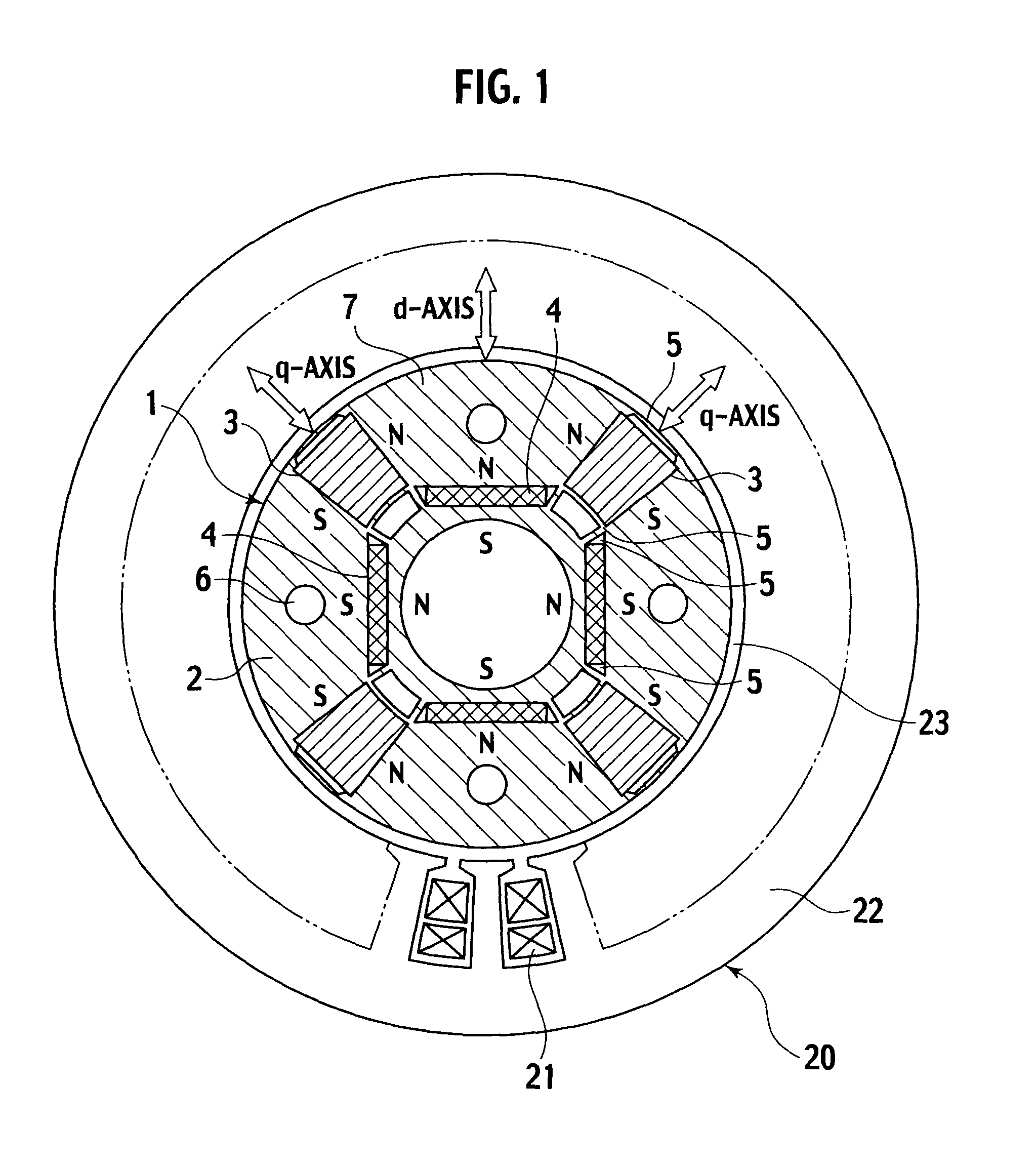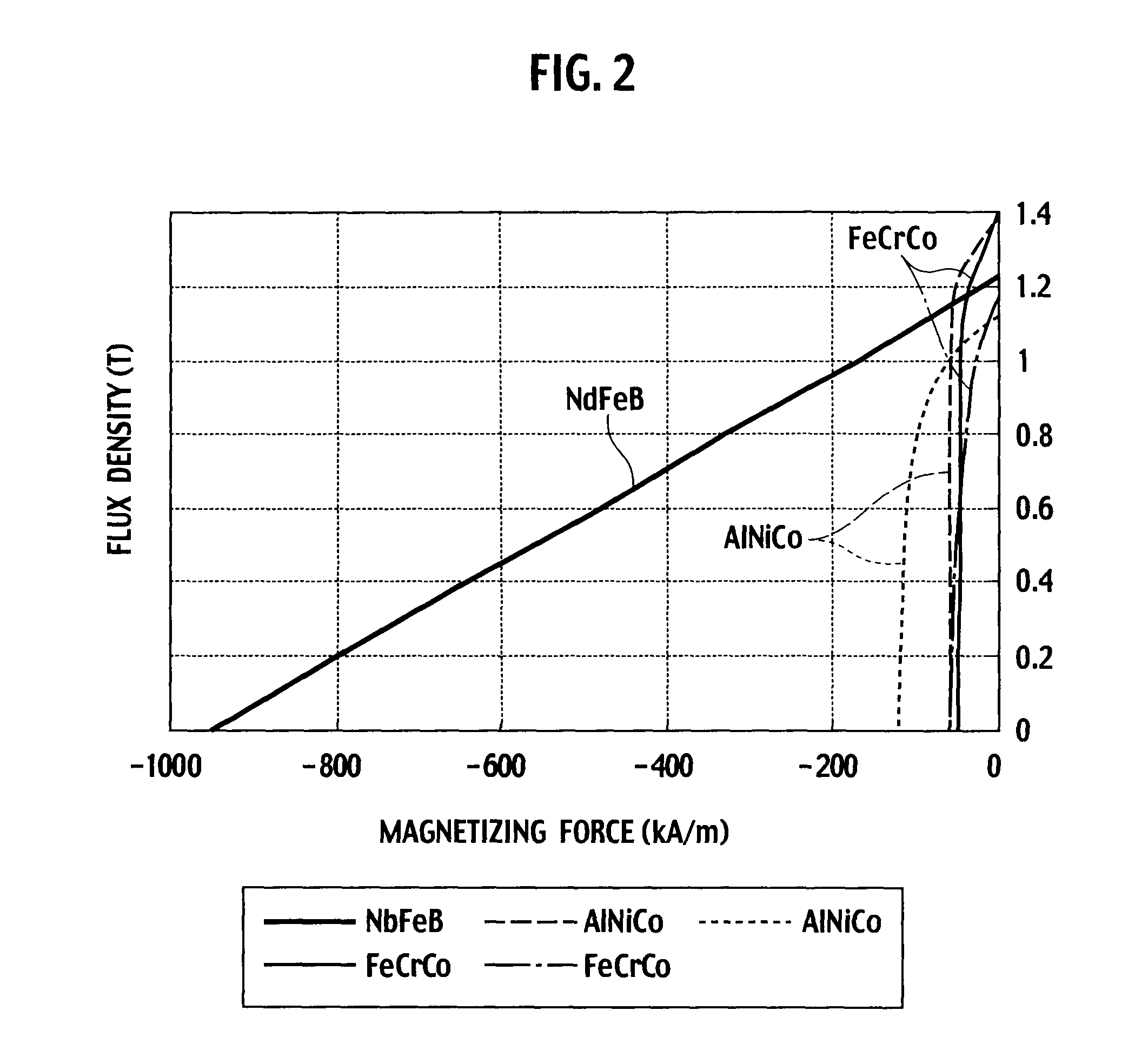Rotor of permanent-magnet-type rotating electrical machine
a rotating electrical machine and permanent magnet technology, applied in the direction of magnetic circuits, dynamo-electric machines, electrical apparatus, etc., can solve the problems of reducing the output and efficiency of the permanent magnet rotating electrical machine in a low-speed zone, increasing iron loss, and deteriorating efficiency, so as to improve efficiency, reliability, and productivity. , the effect of high torqu
- Summary
- Abstract
- Description
- Claims
- Application Information
AI Technical Summary
Benefits of technology
Problems solved by technology
Method used
Image
Examples
first embodiment
[0030]A permanent-magnet-type rotating electrical machine according to the first embodiment of the present invention will be explained with reference to FIGS. 1 to 5. FIG. 1 shows a structure of the permanent-magnet-type rotating electrical machine according to the embodiment. Inside a stator 20, a rotor 1 is accommodated to face the stator 20 with an air gap 23 interposing between them. The stator 20 may be of a standard structure adoptable for an AC motor. According to this embodiment, the stator 20 is similar to the conventional stator 20 shown in FIG. 9.
[0031]The rotor 1 according to the embodiment includes a rotor core 2, first permanent magnets 3 whose product of a coercive force and a magnetizing direction thickness is small, and second permanent magnets 4 whose product of a coercive force and a magnetizing direction thickness is large. The rotor core 2 is constituted by laminating silicon steel plates. The first and second permanent magnets 3 and 4 are embedded in the rotor ...
second embodiment
[0061]A permanent-magnet-type rotating electrical machine according to the second embodiment of the present invention is characterized in that it adopts an NdFeB magnet having little Dy element in place of the second permanent magnet 4 whose product of a coercive force and a magnetizing direction thickness is large of the permanent-magnet-type rotating electrical machine of the first embodiment shown in FIG. 1. The remaining configuration of the second embodiment is common to the first embodiment shown in FIG. 1.
[0062]With little Dy element, the remanent flux density of the permanent magnet becomes high to 1.33 T or over at 20° C.
[0063]At high speed, the rotating electrical machine of the related art carries out flux-weakening control with a negative d-axis current to suppress a voltage increase due to an induced voltage. At this time, an excessive counter magnetic field acts on a permanent magnet so that the permanent magnet is irreversibly demagnetized to greatly reduce output. To...
third embodiment
[0067]A permanent-magnet-type rotating electrical machine according to the third embodiment of the present invention will be explained with reference to a structural view of a rotor 1 shown in FIG. 6. The permanent-magnet-type rotating electrical machine of this embodiment consists of the rotor 1 shown in FIG. 6 and a stator 20 accommodating the rotor 1. Like the other embodiments, the stator 20 has the configuration shown in FIGS. 1 and 9. In FIG. 6, elements common to those of the first embodiment shown in FIG. 1 are represented with the same reference marks.
[0068]As shown in FIG. 6, the rotor 1 of this embodiment embeds second permanent magnets 4 in a rotor core 2, each second permanent magnet 4 being an NdFeB magnet having an inverted U-shape that protrudes toward an outer circumferential side. A center axis of the inverted U-shape of the second permanent magnet 4 is on a d-axis. Each first permanent magnet 3 is made of an alnico magnet and is arranged inside the rotor core 2 al...
PUM
 Login to View More
Login to View More Abstract
Description
Claims
Application Information
 Login to View More
Login to View More - R&D
- Intellectual Property
- Life Sciences
- Materials
- Tech Scout
- Unparalleled Data Quality
- Higher Quality Content
- 60% Fewer Hallucinations
Browse by: Latest US Patents, China's latest patents, Technical Efficacy Thesaurus, Application Domain, Technology Topic, Popular Technical Reports.
© 2025 PatSnap. All rights reserved.Legal|Privacy policy|Modern Slavery Act Transparency Statement|Sitemap|About US| Contact US: help@patsnap.com



